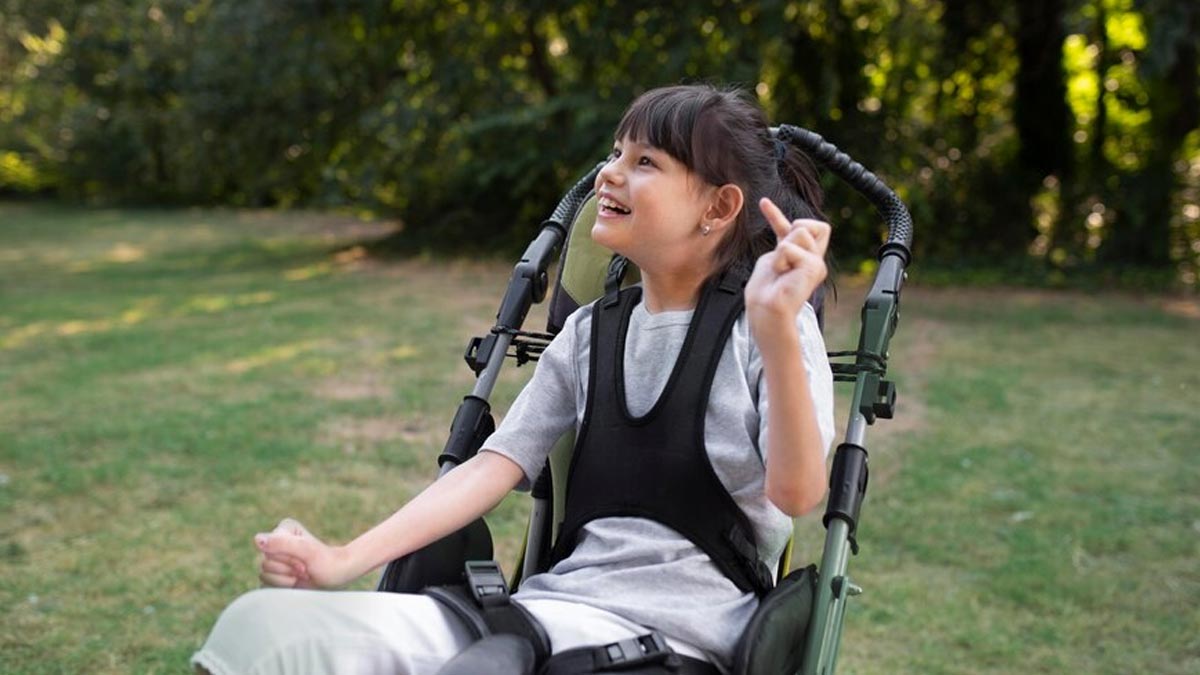
Every year, World Cerebral Palsy Day is celebrated on October 6 to raise awareness about the condition and to brainstorm ways to secure the future of people with cerebral palsy. It is a disorder characterised by impaired muscle coordination that impacts a person's ability to move and maintain balance and posture. Worldwide, the condition affects about 1.7 crore people, according to the Cerebral Palsy Alliance Research Foundation (CPARF) and in India, the estimated incidence is one per 1000 live births.
Cerebral palsy currently has no cure, however, speaking with the OnlyMyHealth team, Dr Smita Patil, Consultant-Paediatric Neurology, SRV Hospitals, Dombivli, shares a few ways to not only improve quality of life in patients, but also lists measures to reduce the risk of the condition in newborns.
Also Read: World Cerebral Palsy Day 2021: Know The Types, Symptoms, Causes And Treatment From A Neurologist
What Causes Cerebral Palsy?

Dr Patil describes cerebral palsy as a disease where children and adults find it difficult to use their motor and cognitive functions to the fullest. In some, it may also affect speech, hearing and vision and can lead to the development of epilepsy, she adds.
According to the Eunice Kennedy Shriver National Institute of Child Health and Human Development (NICHD), cerebral palsy is caused by damage in the parts of the brain that control movement, which include:
- Damage to the white matter of the brain
- Abnormal brain development
- Bleeding in the brain
- Lack of oxygen in the brain
The health body adds that these events can occur before, during, or shortly after birth or in the first few years of life, when the brain is still developing, suggesting that the majority of the children with cerebral palsy were born with the condition, also known as congenital cerebral palsy.
Risk Factors Of Cerebral Palsy

Some of the factors that put one at risk of developing cerebral palsy include:
1) Prior to birth:
- Premature delivery
- Maternal infections, particularly Rubella, Chickenpox, Toxoplasmosis, Cytomegalovirus, Herpes, Zika virus, etc
- Mothers experiencing hypertension during pregnancy or engaging in smoking, drinking, or drug use
2) At/After birth
- Difficult labour
- Newborn developing infections shortly after delivery, such as meningitis
- Severe jaundice in the infant leading to kernicterus, a type of brain damage resulting from elevated levels of bilirubin in the baby's blood
- Brain haemorrhage due to various underlying factors
Dr Patil says, “While some risk factors are related to prenatal development, it's not limited to pregnancy,” adding that the condition can also occur due to injuries or infections during infancy or early childhood.”
“The age group most prone to developing cerebral palsy is typically infants and young children, particularly during the first few years of life when brain development is most active,” she notes.
How To Reduce The Risk Of Cerebral Palsy In Newborns?

For someone with cerebral palsy, there is currently no cure. Nevertheless, it is possible to make improvements in motor function through the use of specific medications, along with appropriate physiotherapy and occupational therapy interventions,” says Dr Patil.
“Speech therapy can be beneficial for children experiencing speech difficulties. Additionally, anti-seizure medications can effectively control seizures associated with cerebral palsy. These various interventions collectively contribute to enhancing the quality of life for individuals affected by this condition,” she adds.
Certain measures can also lower the risk of developing cerebral palsy in newborns. These include:
- Adequate maternal nutrition and high-quality healthcare
- Maternal vaccinations prior to pregnancy, such as rubella and chickenpox
- Effective monitoring of labour progress and the baby's heart rate during delivery to prevent hypoxia, which refers to low levels of oxygen in the body's tissues
- Timely vaccination of the newborn to prevent meningitis and prompt medical guidance during any childhood illnesses to prevent potential damage
The US Centers for Disease Control and Prevention (CDC) suggests that cerebral palsy associated with genetics is not preventable. However, certain measures taken prior to and during pregnancy and also after birth can reduce the risk of disease development.







